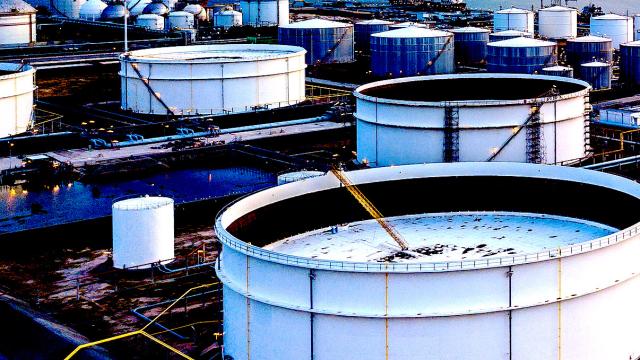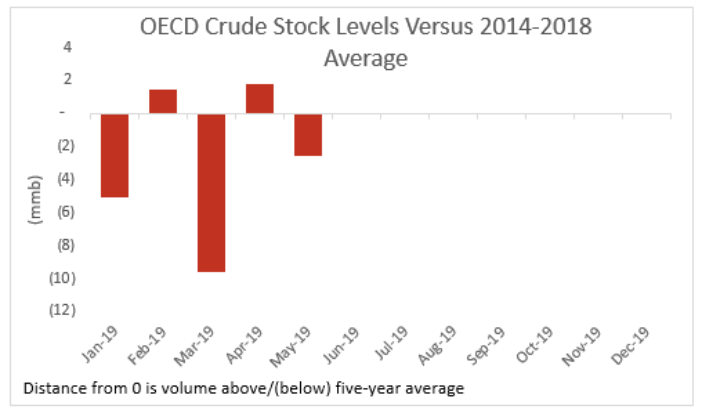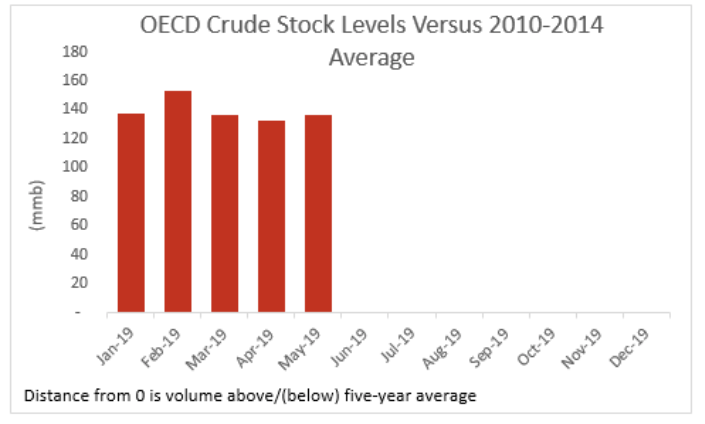
(Shutterstock, HartEnergy.com)
At the most recent OPEC and non-OPEC ministerial meetings at the end of June, OPEC reiterated that its goal is to return Organisation for Economic Co-operation and Development (OECD) OECD crude stock levels to the five-year average seen in 2015.
The 2015 average was specifically cited during the press conference because subsequent years suffer from bloated stock levels and thus provide too high a baseline. However, Stratas Advisors’ most recent forecast of OECD stock levels, released as part of the Short Term Outlook Service’s latest Crude Oil Outlook shows that this may be an impossible target to meet before March 2020, raising the question of what happens next.
- Stratas Advisors forecasts OECD stocks will be ~105 million barrels above the 2015 five-year average level in March 2020;
- This disparity shrinks significantly in April 2020 due to a jump in the historic average level that current inventories would be compared against (March 2010-2014 average = 985 million barrels April 2010-2014 average = 1,000 million barrels).
- If OPEC remains significantly far from its target, the likelihood rises of another continuation in the production agreement or a change to the stated goal.
OPEC claims (correctly) that crude stocks were inflated by several years of oversupply, and measuring against today’s five-year average does not paint an accurate picture. Measured against today’s five-year average, total OECD crude stocks are quite healthy, averaging 2.6 million barrels below the average May stock level seen in 2014-2018 (also referred to as the “current five-year average”).

However, change the timeline and a very different picture emerges. And it is this picture that OPEC is concerned with. Looking at the chart below you can see that OECD crude stocks today are still well above the 2015 five-year average, the average inventory size in a given month from 2010 to 2014. In fact, crude stocks are 136 million barrels above the 2015 level.

This would imply that OPEC has quite a bit of work to do. In our latest Quarterly Crude Oil Outlook, we released updated expectations for OECD crude stock movements. Below, we append that forecast to current stock levels to see if OPEC will be successful before their self-imposed March 2020 deadline in hitting their target of parity with 2015 average stock levels.
Recommended Reading
Gulfport Energy to Offer $500MM Senior Notes Due 2029
2024-09-03 - Gulfport Energy Corp. also commenced a tender offer to purchase for cash its 8.0% senior notes due 2026.
ONEOK Offers $7B in Notes to Fund EnLink, Medallion Midstream Deals
2024-09-11 - ONEOK intends to use the proceeds to fund its previously announced acquisition of Global Infrastructure Partners’ interest in midstream companies EnLink and Medallion.
Kosmos to Repay Debt with $500MM Senior Notes Offer
2024-09-11 - Kosmos Energy’s offering will be used to fund a portion of its 7.125% senior notes due 2026, 7.750% senior notes due 2027 and 7.500% senior notes due 2028.
Upstream, Midstream Dividends Declared in the Week of July 8, 2024
2024-07-11 - Here is a selection of upstream and midstream dividends declared in the week of July 8.
Solaris Stock Jumps 40% On $200MM Acquisition of Distributed Power Provider
2024-07-11 - With the acquisition of distributed power provider Mobile Energy Rentals, oilfield services player Solaris sees opportunity to grow in industries outside of the oil patch—data centers, in particular.
Comments
Add new comment
This conversation is moderated according to Hart Energy community rules. Please read the rules before joining the discussion. If you’re experiencing any technical problems, please contact our customer care team.






